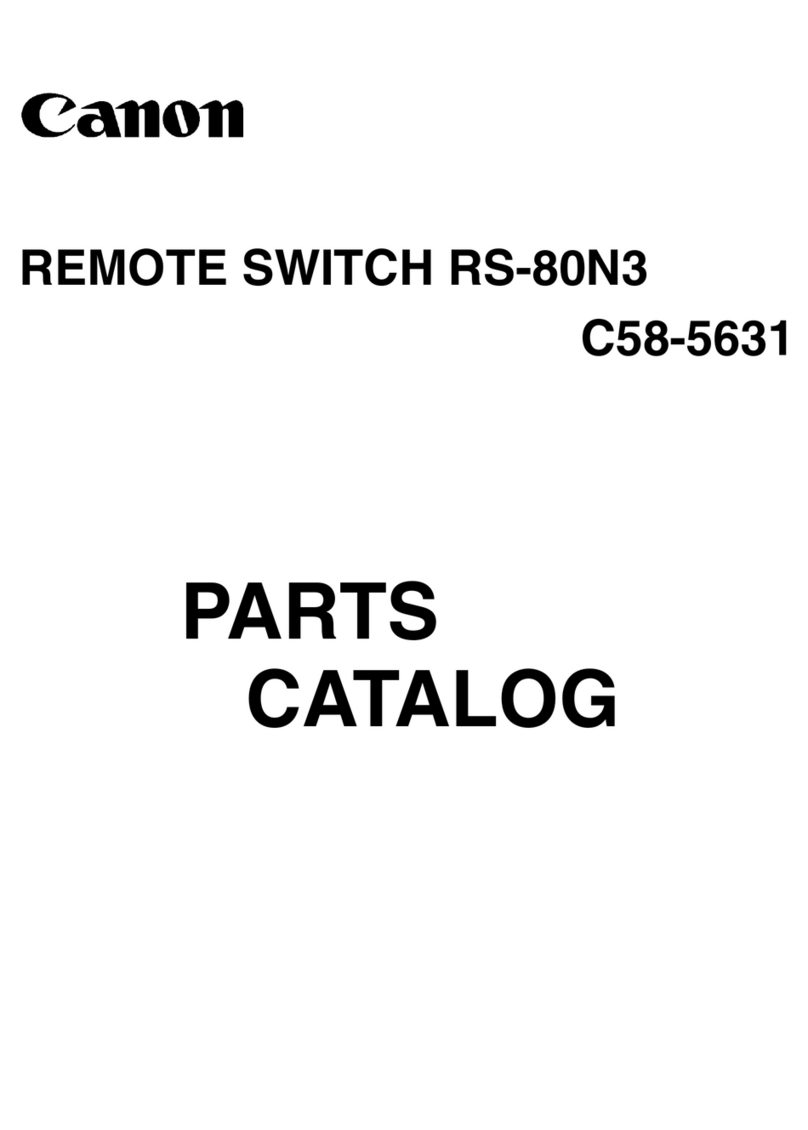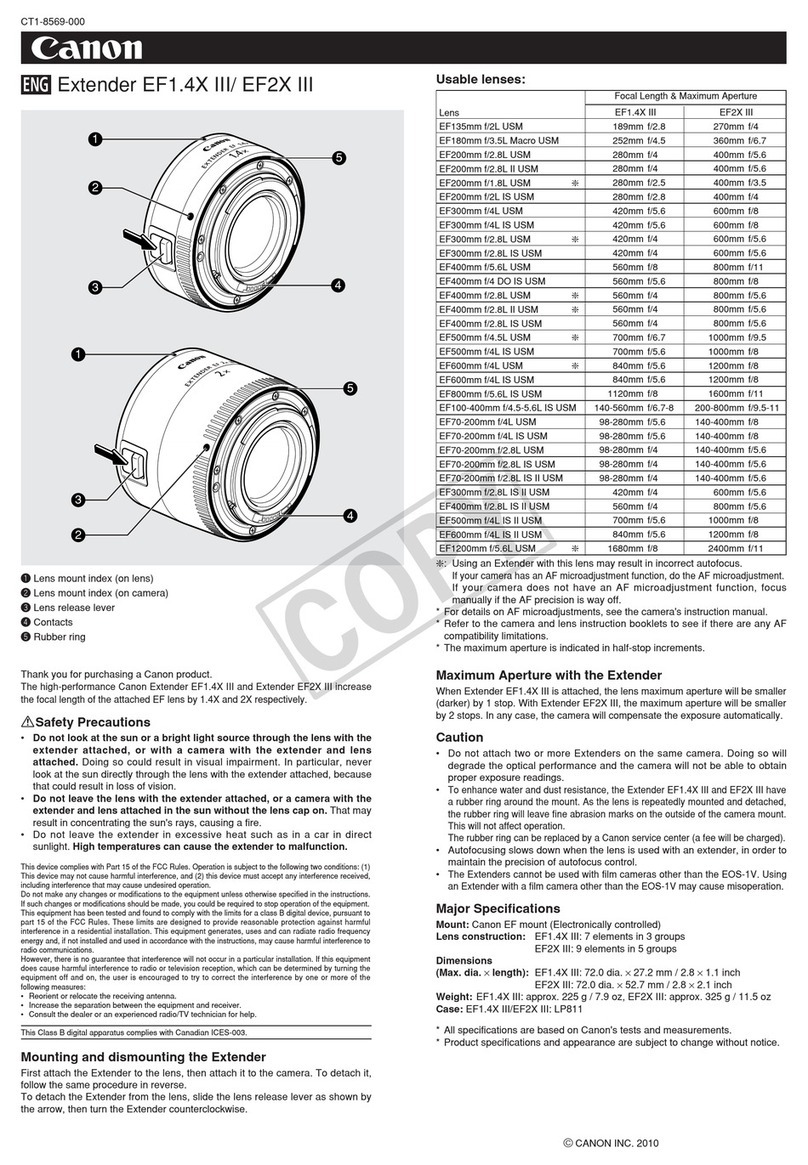Canon 540EZ - Speedlite - Hot-shoe clip-on Flash User manual
Other Canon Camera Accessories manuals

Canon
Canon WP-DC37 User manual

Canon
Canon Speedlite 188A User manual

Canon
Canon Puncher Unit-BS1 User manual

Canon
Canon EOS C300 User manual
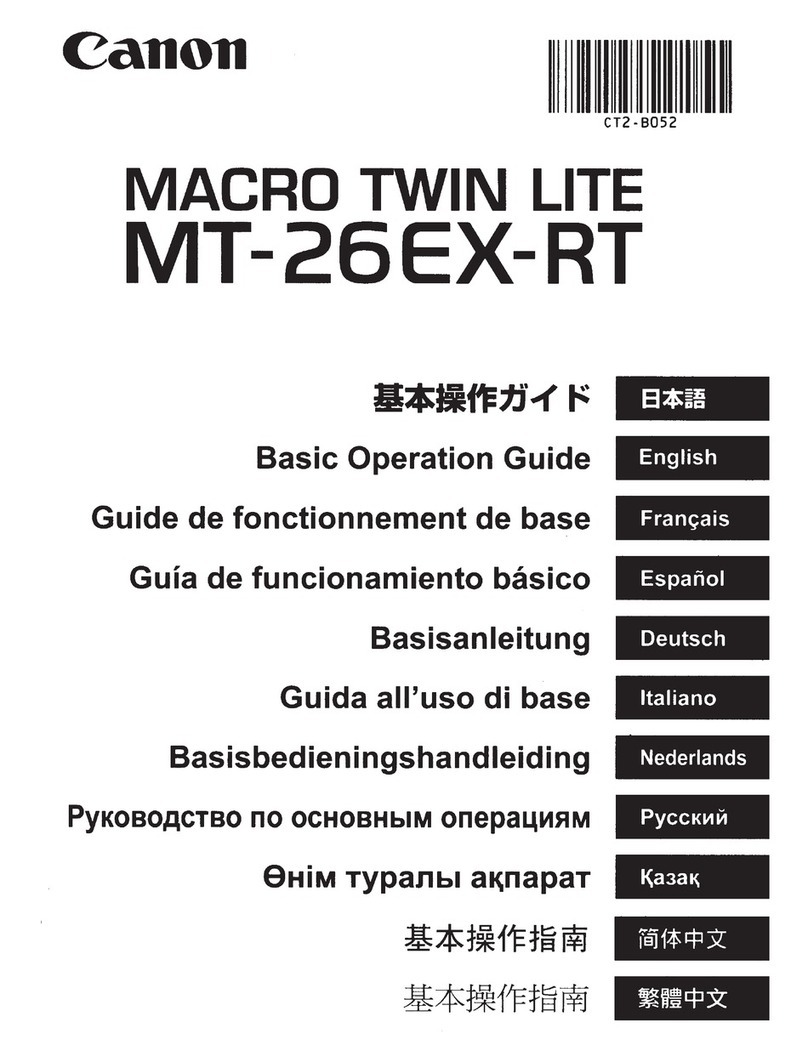
Canon
Canon Macro Twin Light MT-26EX-RT Assembly instructions

Canon
Canon LIFE SIZE CONVERTER EF Instruction Manual
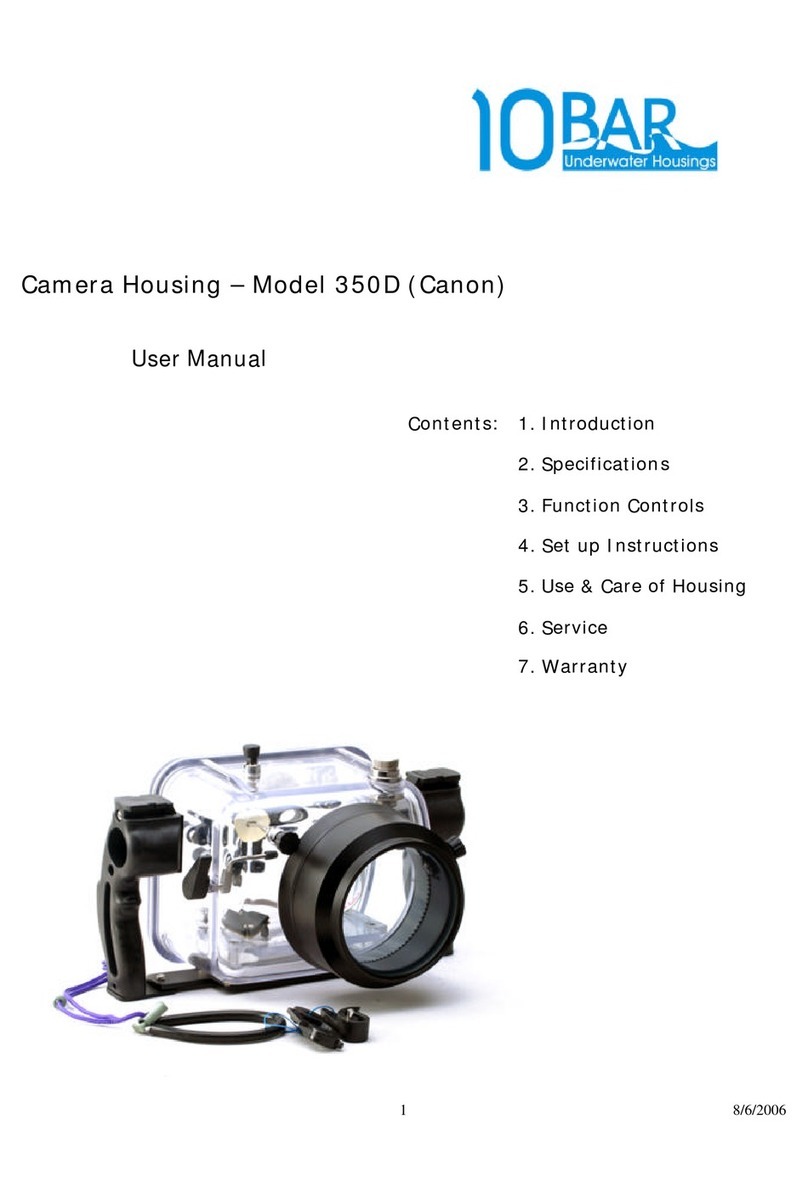
Canon
Canon REBEL 350D User manual

Canon
Canon ANTIFOG EYEPIECE Instruction Manual

Canon
Canon HG-100TBR Assembly instructions
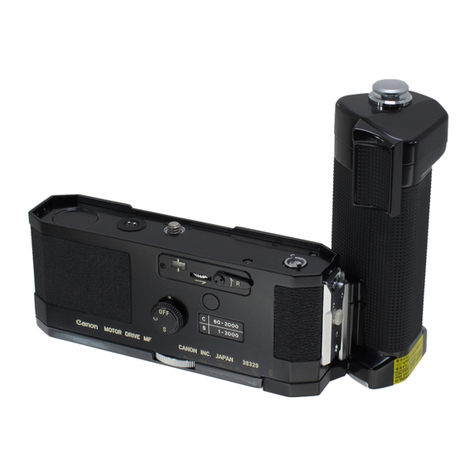
Canon
Canon motor drive mf User manual
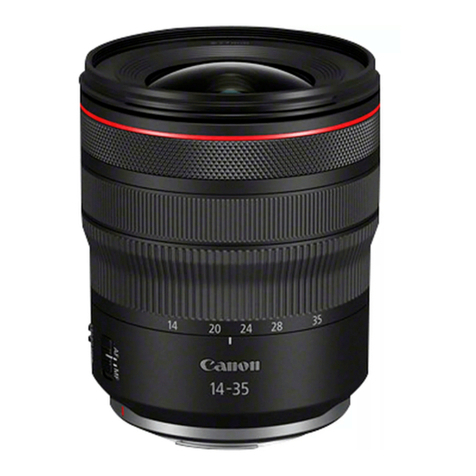
Canon
Canon RF 14-35mm F4 L IS USM User manual
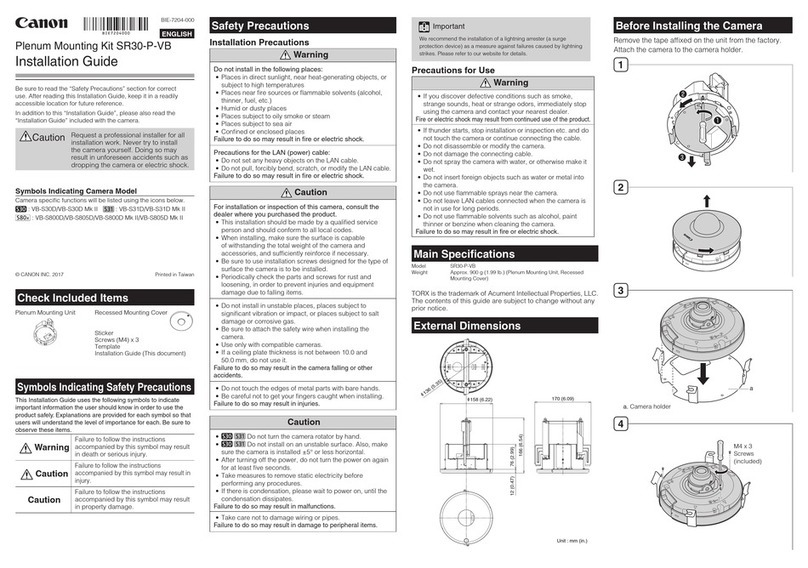
Canon
Canon Plenum SR30-P-VB User manual

Canon
Canon DU-82 User manual
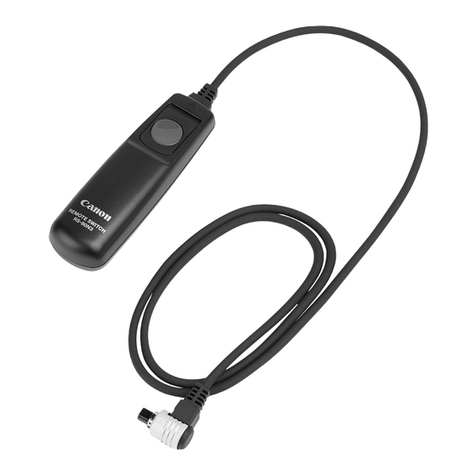
Canon
Canon RS-80N3 User manual
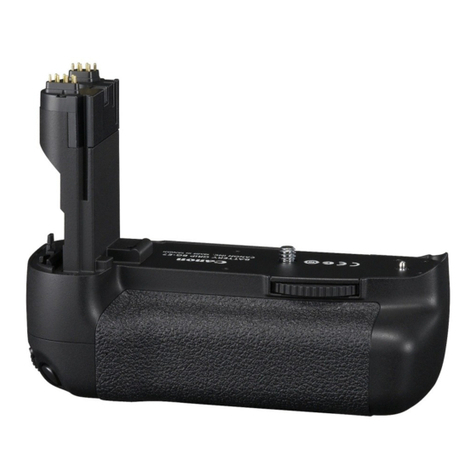
Canon
Canon BG-E7 User manual

Canon
Canon BG-E21 User manual

Canon
Canon Film Chamber 250 User manual
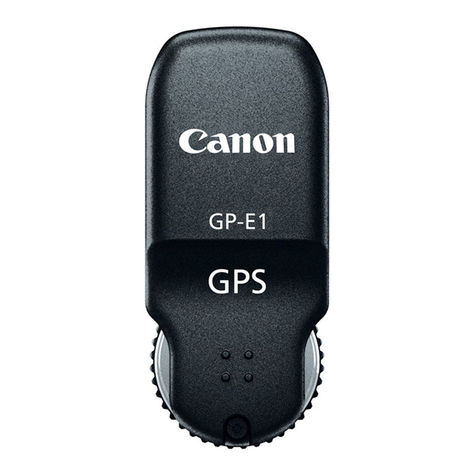
Canon
Canon LM-V1 User manual
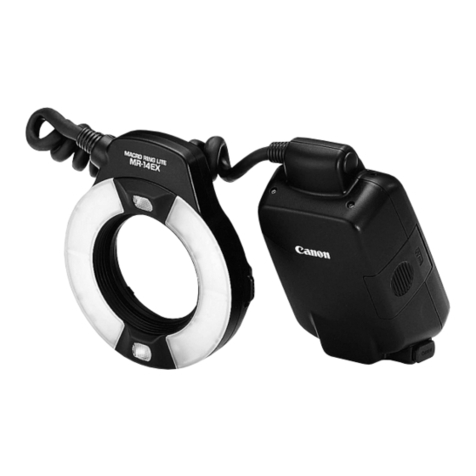
Canon
Canon MACRO SPEEDLITE MR-14EX User manual
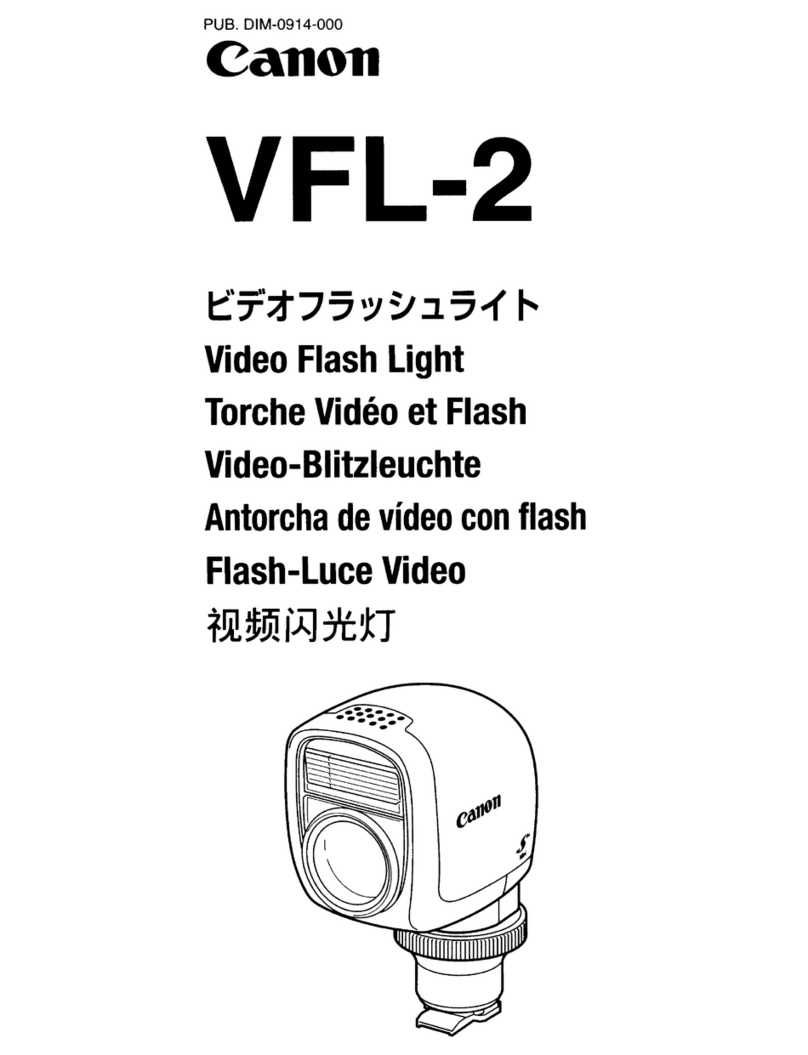
Canon
Canon VFL-2 User manual
Popular Camera Accessories manuals by other brands

Trojan
Trojan GC2 48V quick start guide

Calumet
Calumet 7100 Series CK7114 operating instructions

Ropox
Ropox 4Single Series User manual and installation instructions

Cambo
Cambo Wide DS Digital Series Main operating instructions

Samsung
Samsung SHG-120 Specification sheet

Ryobi
Ryobi BPL-1820 Owner's operating manual
